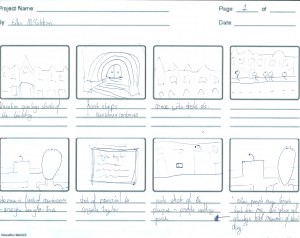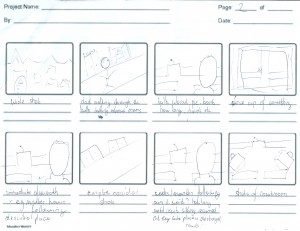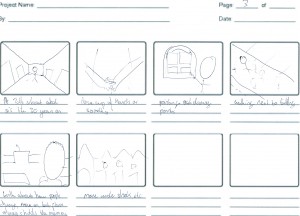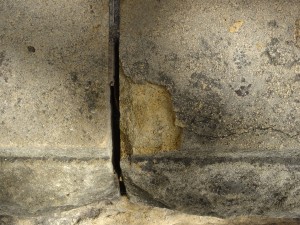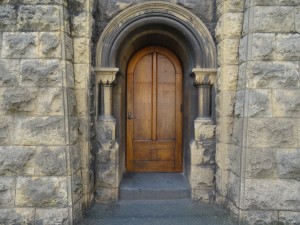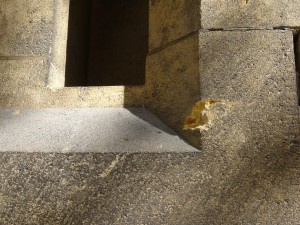Presentation slides and notes can be found on google drive in the ‘Website/Presentation Group’ folder.
Ghosts of RMIT has been my most collaborative university class yet. With just 12 class members, the studio format allowed us to work together without the process feeling forced and full of friction.
I have worked with in particular with Bec, Jess, and Imogen to out together a website and presentation for the studio.
In the early stages of this work, while groups were still being finalised, Bec and I began a presentation, while Imogen, Linh and Jess worked on the website. Probably all the work done before about week 10 has since been discarded, but it gave provided a good starting point.
As part of this website and presentation, it was suggested we design a logo for this class. Somehow I became the ‘graphic designer’ for this task, which I was quite pleased about. As ideas about the logo were thrown around, I tried to make them come to life in photoshop. A good few hours were spent perfected our logo, which I am now quite proud of.
The website for Ghosts has come together really well. Imogen was able to find a great theme, and with a good colour palette, the prominence of the logo, and smart menu planning we have created a wordpress site that doesn’t look like a wordpress site.
The website has been very collaborative. My own role within the website has been small bits and pieces of editing and tweaking. During this week I have looked over the site most days, and fixed any problems I’ve encountered. I’ve added hyperlinks, fixed broken links and changed uneven font sized. I’ve fixed my own spelling and grammar mistakes. I wrote some copy for the site, such as the page for Building 20, as well as the ‘creator’s’ page and the ‘places’ page.
I’ve had a little more to do with the presentation. In class in week 11, Jess, Bec, Imogen and I began putting together slides for the presentation; I later finished these at home. After feedback from the studio, I changed the slides to be mostly photos, rather than the text we had done in the first draft. Although I worked on the slides mostly alone, this was not a very time consuming task. I will also be speaking during the presentation with Imogen.
Working on the website and presentation has been really very enjoyable; I feel like I’ve gotten off lightly compared to the virtual tour group. Working with the other girls was fun, and we worked well as a team. I found that designing the logo was my favourite aspect of this brief, as I was able to be creative and utilise my photoshop skills. I’m very happy with how every part of this brief flows. By sticking to the same colour palette and using similar fonts and images, every aspect works well as a whole.
We haven’t really had any difficulties completing this brief. Facebook and Google Drive have been vitally important for communication and sharing, and have helped solve any problems we would have had in those areas.
If I were to undertake this brief again, I wouldn’t change much. I would probably do the work a earlier and not in a rush in the final week, but I can say the same about pretty much every uni assignment I’ve done. I would ask for more feedback in the earlier stages of work, rather than completing things, asking for feedback and having to make major changes. I would have worked closer with Imogen on the website design, purely so that I could learn from her; I think she did a really great job.
This brief has helped me explore how to best represent space and place online and in a presentation. All of us in Ghosts have been focused on our two buildings all semester, so it was great trying to figure out how to make them interesting to outsiders.
I will be continuing to add things (highlight reels, time commands, etc.) to the presentation over the next week as class members send through their work. The website will also be updated as more content comes in.
